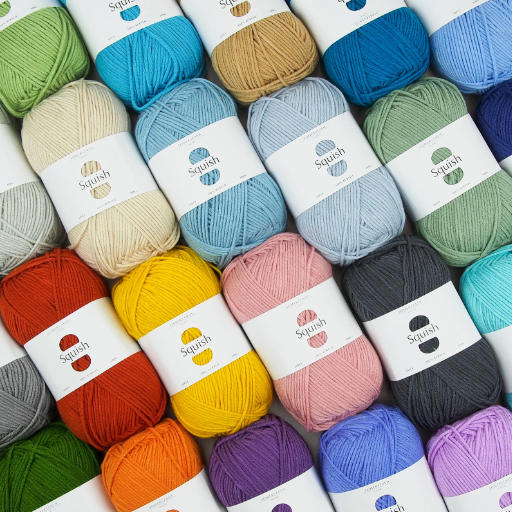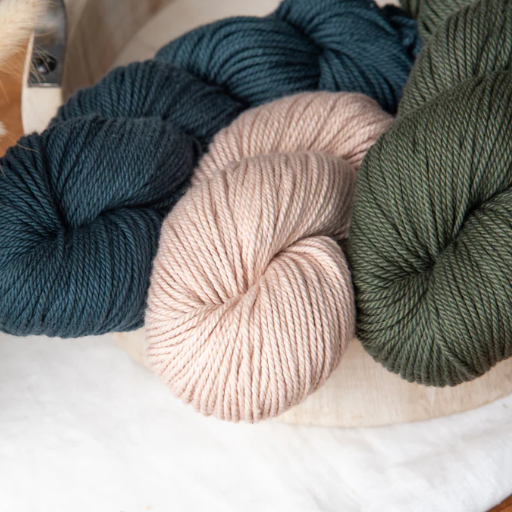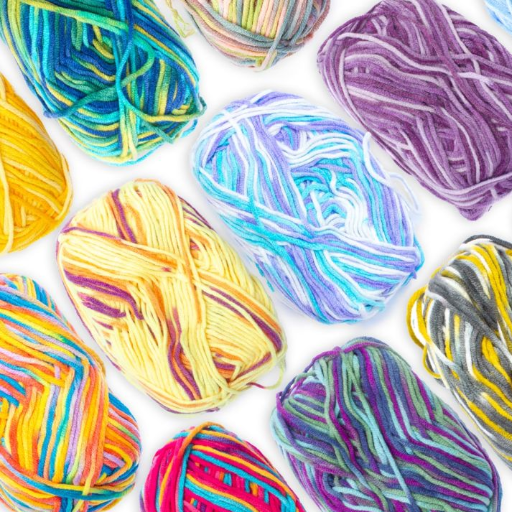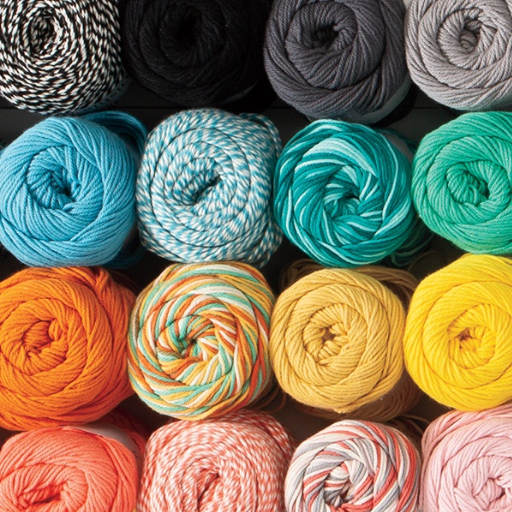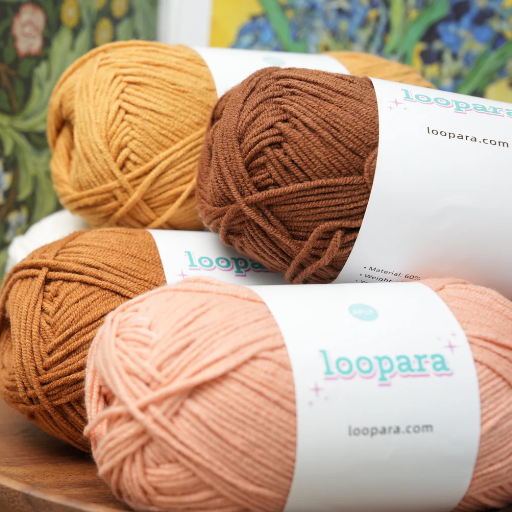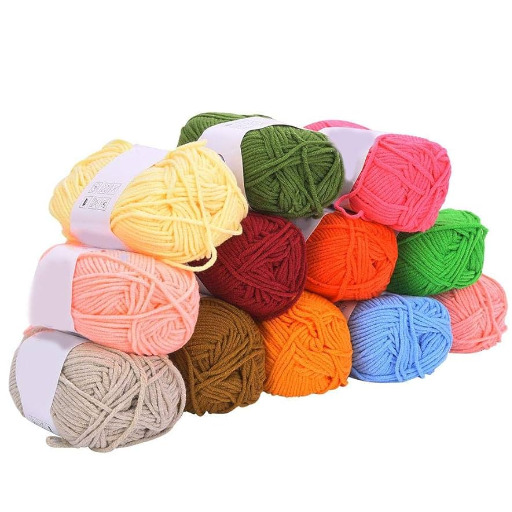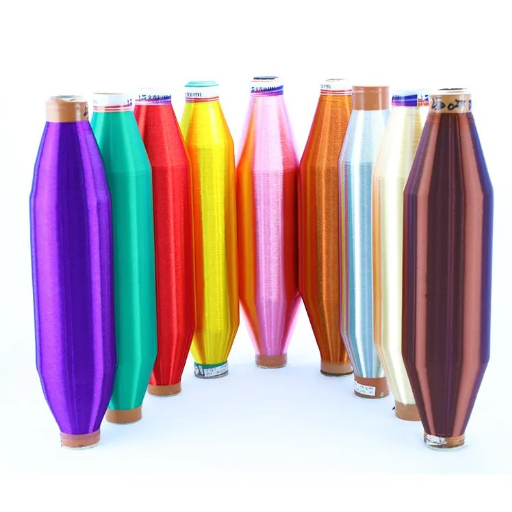Your sewing will always look neat and last for long if you select the proper thread to go with your sewing machine. There is a great selection of thread in terms of material, diameter, and function, so making a decision can be tricky but will aid you in the quality of work you produce. This guide will explain different kinds of threads such as cotton, polyester, and nylon, as well as how and when to use them. Other subjects we will tackle are thread weight, tensile strength, type of fabric and sewing machines, as well as the relations. After going through this article, you will know what thread to choose to meet the expectations of your sewing projects both in terms of design and functionality.
What Type of Thread Should I Use for My Sewing Machine?

With sewing projects, matching the type of thread to your fabric is most important. For delicate fabrics like cotton and linen, using low elastic, smooth cotton thread is optimal. More durable and elastic, though, polyester thread is a great match for synthetic or stretch material. For heavy-duty uses such as apparel or outdoor equipment, high-tensile nylon thread is optimal. Be sure to match the thread weight and type to the fabric so there is no unwanted puckering or breakage. Low-quality thread should be avoided as this increases lint buildup and diminishes the effectiveness of the sewing machine.
Understanding Different Thread Types
Thread types can be broadly categorized based on their material composition, characteristics, and intended use. The main thread types include cotton, polyester, nylon, silk, and specialty threads.
- Cotton Thread: Known for its natural composition, cotton thread is smooth, low in elasticity, and suitable for lightweight, woven fabrics like cotton and linen. It is ideal for projects requiring a softer finish and heat resistance but is not recommended for high-stress applications due to its lack of durability.
- Polyester Thread: A versatile and widely used synthetic thread, polyester offers strength, elasticity, and resistance to shrinking and stretching. It works well with both natural and synthetic fabrics, including stretchy materials, and is an excellent choice for most general sewing projects. Polyester threads often come with a wax or silicone finish, enhancing smoothness and reducing friction during stitching.
- Nylon Thread: Designed for heavy-duty applications, nylon thread has a high tensile strength and is exceptionally durable, making it suitable for upholstery, outdoor gear, leatherwork, and industrial sewing. Its elasticity aids in preventing seam damage in high-stress fabrics.
- Silk Thread: A luxurious natural thread, silk is both strong and fine, making it perfect for delicate fabrics like silk and lightweight wool. It is most commonly used in tailoring, couture sewing, and embroidery work due to its smooth finish and ability to disappear into the fabric.
- Specialty Threads: Threads such as metallic, variegated, and invisible threads cater to decorative and specific-purpose projects. Metallic threads add a shimmer effect, variegated threads provide multicolored designs, and invisible threads (monofilament) are typically used for quilting or stitching without visible seams.
Each thread type has its advantages and limitations, and selecting the correct thread depends on factors such as fabric type, project requirements, and durability needs. A precise match ensures optimal sewing performance and a professional finish. Combining the right thread with the correct tension, needle, and machine settings is critical for achieving the desired results.
Choosing the Right Thread Weight for Your Sewing Project
Matching the right thread weight to the fabric is crucial, especially when my sewing project involves delicate fabrics that require worker attention. In cases involving chiffon and silk, my primary choice of threads is finer ones that exceed 60 weight. Such threads not only enhance the texture but also blend seamlessly. Medium-weight fabrics like cotton and linen do require special treatment too, averaging 40-weight threads is the perfect balance of durability and appearance. Heavy fabrics like canvas and denim do need thicker threads to even out the weight, I tend to go for a lower or equal 30 weight for optimal strength. My machine’s tension also comes into consideration, and once adjusted, every seam provides a precise stitch.
Exploring Thread Brands
No matter what sewing project you have, selecting a credible thread brand guarantees quality and precision. Gütermann is certainly known for its top-tier polyester and cotton threads that are suitable for various fabric types, earning them a spot among the finest thread brands. Their threads are exceptionally known for their strength and smooth finish which makes both hand and machine sewing effortless. Coats & Clark is another great brand known for their widely available all-purpose durable threads which are constantly used by novice and expert sewists alike. Finally, Aurifil highly used by quilters and craftsman is known for their exceptional long staple cotton threads that produce little lint and superbly withstand delicate stitching work. All align with sewing requirements as they offer a great variety of threads in different weights and finishes.
How Do I Select the Best Thread for My Quilting Projects?

Considering the type of fabric along with the intended purpose of the quilt and the thread blend’s characteristics, helps in deciding the best thread for quilting projects. As an example, Aurifil and Gutermann offer excellent quality cotton thread which is suitable for almost all quilting projects because it is strong, has low lint, and a smooth finish. An appropriate thread weight should be chosen based on the appearance you want to achieve. For fine stitching, a lighter thread of 40wt to 50wt should be used whereas for bold decorative quilting, a thicker thread of 28wt or 12wt works best. Don’t forget to ensure that the thread color is either comparable to or purposefully differs from your fabric so that the aesthetic achieved suits your expectations. Always remember, to display or heavily use the quilt, the thread durability needs matching.
The Benefits of Cotton Thread in Quilting
Because of its natural fibers and compatibility with other fabrics, cotton threads are known to be the best option for quilting. The biggest benefits are the strength and durability of the threads that guarantee firm stitches even after repeated use over a long period. Compared to synthetic options, cotton threads produce less lint which results in smoother operation and longer longevity of the machine parts. Its heat resistance allows for safe ironing and pressing while quilting as well.
As for the aesthetics, the matte finish of cotton threads is ideal to blend in with cotton fabrics, making it look professional. It is preferred for uniform stitching because it can be bought in an array of colors and different thicknesses to adapt to highly detailed designs or bold decorative patterns. Moreover, cotton threads are stronger and will not stretch, ensuring crisp clean stitches which is highly important for detailed piecing and quilting work. For quilters, cotton remains a top recommendation because it is reliable and easy to use.
Using Polyester Thread for Machine Quilting
Polyester threads are a great choice for machine quilting as it is both economical and a strong consideration. Its durable look enables it to take a lot of weight without snapping which makes it useful for intricate designs or heavy-duty jobs. Polyester threads are not easily overstretched so they can provide even stitches for the entire sewing process. Also, they do not get damaged as easily from ultraviolet rays or normal wear giving them a longer lifespan.
Looking at a design perspective, polyester threads have many vibrant colors available with a glossy and matte finish which can be used for striking contrasts or subtle blending with fabrics. Because of their low lint characteristics, the amount of maintenance needed during machine quilting is reduced. In addition, they are resistant to heat and work efficiently in high-speed sewing machines. For durability and efficiency, working with such threads is preferable. Ultimately, for quilters who want to achieve a reasonable composition of strength and flexibility with aesthetics, polyester would be an excellent choice compared to cotton threads.
Why Thread Quality is Crucial in Quilting
The quality of the thread is important for the durability as well as the beauty of the quilt. Just like fabrics, threads do come in varying grades. Premium-level threads add to the beauty of the quilt because they come with a broad range of colors and finishes. Additionally, advanced threads such as high-grade polyester threads also offer the benefit of withstanding UV rays and heat. This makes them suitable for modern sewing machines and high-speed quilting. Low-grade threads do not offer as many features which just like fabrics offer varying grades of lint build-up. Lower-grade threads also break and fray easily along with producing uneven stitching which lowers the quilt’s durability.
What Are the Differences Between Polyester and Cotton Thread?

Polyester and cotton threads differ significantly in terms of strength, durability, and application. Polyester thread is stronger, more elastic, and resistant to shrinking, making it suitable for high-speed quilting and machine sewing. It also withstands UV rays, heat, and frequent washing, ensuring long-term durability. Conversely, cotton thread is softer, less elastic, and preferred for hand quilting or applications requiring a natural, matte finish. While cotton threads blend seamlessly with cotton fabrics and offer a traditional aesthetic, they are more prone to fraying and breakage under tension, especially in high-speed sewing machines. Each type has its pros, making the choice dependent on the specific quilting needs.
When to Use Polyester Thread
Polyester threads are the best choice when high strength and durability are essential, especially with frequent machine sewing and quilting, or washing. It works superbly in high-speed stitching because of its elasticity which minimizes the chances of breakage. Besides, polyester threads are unshrinkable and do not deteriorate under UV or heat, making them useful in outdoor fabric, clothing, or anything that undergoes rough cleaning and sun exposure. Because of their subtle sheen, They are preferred for modern quilting or decorative sewing because they combine well with vibrant fabrics. For strong and durable seams, polyester threads work best in all conditions.
When to Choose Cotton Thread
Because its texture and composition blend perfectly with natural fibers like cotton or linen, cotton thread is the best option. It makes a smooth and matte finish which is highly sought after in traditional and heirloom quilting. For these types of projects, a classic, clean appearance is preferred. Moreover, cotton thread’s lower elasticity compared to polyester makes it easier to obtain precise and stable stitches, for instance, in intricate piecing or embroidery work. The cotton thread also works well at low speeds in domestic sewing machines. Unfortunately, because it is a natural fiber, cotton thread tends to shrink. When subjected to moisture or abrasion, it can also weaken. Despite these negatives, its biodegradable and eco-friendly features make it an appealing option for sustainable sewing. For applications that need a soft touch, cotton thread remains the primary option for most sewers and quilters.
Comparing the Durability of Thread Types
As far as durability is concerned, different types of threads have different fiber combinations, tensile strength, environmental stress resistance, and intended use application. Cotton threads are often loved due to natural, easy-to-blend fabrics, but it is organic structure makes them prone to disintegrating under stress or moisture. Unlike cotton, polyester threads offer greater flexibility and strength. Its synthetic nature also means it does not shrink, get abraded, or get damaged by UV rays, making longer periods of use feasible. Another synthetic material is nylon thread which is highly durable and elastic, making it preferred for very strong seams such as upholstery and outdoor materials. The downside to nylon is its structural weakening from long sun exposure. In the end, knowing factors like environmental parameters, fabric type, and expected wear helps in determining the correct thread type to use. For a variety of applications, threads of polyester tend to be the most durable and versatile.
How to Ensure Thread Quality for Sewing Applications

- Material Composition: Evaluate the thread material for compatibility with the fabric type and its environmental resilience. For example, use polyester threads for durability and UV resistance, or nylon for elastic strength in heavy-duty applications.
- Tensile Strength Testing: Ensure the thread can withstand intended stress by performing a tensile strength test. This involves pulling the thread until breakage to measure its load capacity.
- Consistency and Smoothness: Check the thread for uniform thickness and a smooth surface to avoid fraying or breaking during use. Irregularities can cause stitching issues.
- Environmental Validation: Verify the thread’s resistance to moisture, heat, and sunlight based on the intended application. Synthetic threads like polyester are more suitable for extended exposure to harsh conditions.
- Storage and Handling: Store threads in a dry, cool environment to prevent degradation. Always ensure proper winding to preserve structural integrity over time.
Adhering to these guidelines ensures consistent quality and extends the longevity of sewing applications. Select threads with the required performance characteristics to meet project-specific demands.
Identifying Quality Sewing Thread
When selecting quality sewing thread, precision, and thorough evaluation are crucial. Here are concise answers to the key questions:
- What materials are best for sewing thread?
High-quality sewing threads are commonly made from polyester, cotton, or blends of both. Polyester offers superior strength and flexibility, while cotton provides a traditional, natural feel ideal for quilting and heirloom projects. Blended threads combine the benefits of both.
- What indicates high thread strength?
Tensile strength is an essential factor. Quality threads resist breaking under tension and maintain durability during stitching. To ensure strength, opt for well-spun threads with uniform fiber distribution.
- What surface qualities should I look for?
A smooth and consistent thread surface is crucial. It minimizes friction during sewing and prevents weakened areas. Inspect for even thickness and avoid threads with visible slubs or inconsistencies.
- Which threads resist environmental challenges?
Polyester threads exhibit better resistance to moisture, UV exposure, and heat compared to cotton. Synthetic threads are the best choice for outdoor or heavy-duty applications and environments with prolonged sun or moisture exposure.
- How should sewing threads be stored to maintain quality?
Proper storage involves keeping threads in a dry, dark, and cool environment. Direct sunlight and humidity degrade the fibers over time, weakening the thread’s performance and longevity.
By referencing industry-tested parameters and leveraging the insights from trusted textile sources, this guide offers a definitive approach to choosing threads that ensure reliability and excellence across a variety of sewing projects.
Common Issues with Thread Quality
- Thread Breakage
Thread breakage is one of the most prevalent issues encountered during sewing. This problem often arises due to inferior thread quality, incorrect tension settings, or the use of a needle size incompatible with the thread. Additionally, excessive humidity or improper thread storage can weaken the fibers, leading to frequent snapping during use.
- Uneven Stitching
Uneven or skipped stitches can result from inconsistent thread strength or thickness. Threads with slubs, knots, or irregularities create disruptions during the stitching process, affecting the final appearance and durability of the seams.
- Fraying and Lint Accumulation
Low-quality threads are prone to fraying during the high-speed operation of sewing machines. They may also shed excessive lint, leading to clogged machine components, which hinder performance and contribute to machine wear over time.
- Environmental Vulnerabilities
Cotton threads, while offering aesthetic appeal, are susceptible to environmental damage such as UV degradation, mold, or rot. Polyester and synthetic threads outperform in durability yet may weaken under extreme heat, making material compatibility crucial.
- Color Fading
Poor-quality threads may experience color fade when exposed to light, washing, or environmental factors. This issue compromises the aesthetic integrity of the finished product, especially in applications requiring vivid or long-lasting colors.
- Thread Unraveling
Threads with loose or poorly bonded fibers may unravel during or after stitching, reducing seam integrity and requiring frequent repairs. Proper tension settings and selecting bonded threads for heavy-duty use help alleviate this problem.
By addressing these common thread quality issues, users can improve sewing efficiency and enhance the overall durability and quality of their projects.
What Thread to Use for Different Sewing Projects?

Selecting the appropriate thread for a sewing project depends on the fabric type, intended use, and required durability. Below are key recommendations for common sewing applications:
- Garment Construction
Use polyester or cotton-polyester blend threads, as they are both strong and flexible, ensuring seams hold well under stress. These threads also resist shrinking during washes.
- Heavy-Duty Sewing
Nylon or bonded polyester threads are ideal for upholstery, leather, and outdoor fabrics due to their high tensile strength and resistance to abrasion.
- Quilting
Cotton threads are preferred for quilting projects because they provide a soft, matte finish and blend seamlessly with natural fabrics commonly used in quilts.
- Decorative Stitching
Rayon or silk threads are excellent choices for embroidery and decorative stitching, offering a smooth texture and vivid colors.
- Stretch Fabrics
For knits or stretch materials, use wooly nylon or textured stretch threads to accommodate fabric elasticity and prevent seam breakage.
By matching the thread type to the project’s requirements, you can achieve professional results, enhance durability, and maintain the visual integrity of the finished item.
Choosing Thread for Embroidery
Pick the type of thread for embroidery by thinking about the fabric, the purpose of the embroidery, and the desired look. Optical effects raise the most and it gets the most focus. Definitions from my point of view & focuses on the reasonings behind, it amazed him. Rayon seems to be the most common one people opt for because of its smoothness, sheens, and color variety which is great for any decorative embroidery works. For natural fibers or pieces that require higher durability, I would recommend using polyester embroidery thread as it is stronger and so are its fading, stretching, and breaking resistant. Sculptured patterns or textiles which are more conventional, need more extensive matte-colored cotton sewn thread like embroidery thread because of their soft finish patterns. Reflection metallic threads are appealing, but they need to be balanced with the right lever tension, or else they can break and use a compatible needle otherwise. Threads that tend to go with the fabric should support the weight and the details of the design that has been assigned to the stitches, it will ultimately make the piece look perfectly stitched and accurate without any strains.
Using Heavy-Duty Thread for Upholstery
When utilizing heavy-duty thread for upholstery, it is essential to prioritize strength, durability, and aesthetic compatibility with the fabric. Heavy-duty threads, such as bonded nylon or bonded polyester, are specifically designed to endure high-stress applications, offering superior resistance to abrasion, UV rays, and general wear over time. Nylon thread is ideal for indoor upholstery due to its elasticity and tensile strength, while polyester thread is better suited for outdoor applications as it resists sunlight and moisture degradation more effectively.
The thread should complement the fabric’s weight and the intended use of the upholstery. For materials like leather or vinyl, heavier threads with higher tensile strength are recommended, as they can handle the stress without fraying or breaking. It is critical to match the needle size and type to the chosen thread to ensure smooth stitching and avoid damaging the fabric. Furthermore, maintaining thread tension balance on the sewing machine is crucial for consistent and secure stitches. By aligning the appropriate thread choice with the project’s demands, high-quality and long-lasting upholstery work can be achieved.
Selecting Elastic Thread for Stretch Fabrics
While working with stretchable materials, the use of elastic thread is imperative so the seams made don’t lose elasticity. It is usually made from a core of rubber or spandex that is covered by polyester or nylon. Elastic threads need to have the capability to stretch and else return to its original form without de-shaping the fabric. When choosing elastic threads, keep in mind the stretchability and weight of the fabric. Light threads are perfect for lightweight materials like jerseys whereas fabrics like athletic wear which are dense and have a lot of stretch to them require thicker threads. When stitching elastic threads, it is best to use a ballpoint or stretch needle to reduce the chances of damaging the fabric. When using sewing machines, elastic thread works best in the bobbin with a standard thread above. Both stitch length and tension need to be adjusted carefully to prevent breaking or puckering. When used in the right manner, elastic threads help maintain the balance of the seams in stretch fabrics even after extensive use.
References
Frequently Asked Questions (FAQ)
Q: What is the best machine thread for a home sewing machine?
A: The best machine thread for a home sewing machine is typically an all-purpose thread. This thread is usually made from polyester or cotton, providing a good balance of strength and flexibility suitable for most fabrics.
Q: How do I choose the right thread for your project?
A: To choose the right thread for your project, consider the fabric type, purpose, and the thread’s weight. For example, quilting thread is ideal for quilts, while embroidery thread is best for detailed work.
Q: What is the difference between embroidery thread and regular sewing machine thread?
A: Embroidery thread is usually made of rayon or polyester and has a sheen that regular sewing machine thread lacks. It is designed for decorative stitching, while regular thread is made for construction.
Q: Can I use serger thread on a regular sewing machine?
A: While you can use serger thread on a regular sewing machine, it’s not recommended for all projects. Serger thread is lighter and may not provide the strength needed for sturdier fabrics.
Q: What type of thread is recommended for quilting?
A: For quilting, a machine quilting thread made from cotton is commonly recommended. It provides strength and durability while allowing for smooth stitches.
Q: Is there a special thread for topstitching?
A: Yes, there is a special thread for topstitching called a topstitching thread. It is thicker than regular sewing thread, providing a more pronounced and decorative stitch.
Q: What thread should be used for heavy-duty projects?
A: For heavy-duty projects, a heavy-duty thread, often made from nylon or polyester, is recommended. It is designed to handle the stress of heavyweight fabrics like canvas or denim.
Q: Why is it important to choose quality thread for sewing?
A: Choosing quality thread for sewing is crucial because it affects the longevity and appearance of your project. Poor-quality thread may break easily and create uneven stitches.
Q: What is the role of bobbin thread in machine sewing?
A: Bobbin thread is used in the lower part of the stitch formation in machine sewing. It helps create balanced stitches and should match or complement the top thread for the best results.
Q: Can hand quilting thread be used in a sewing machine?
A: Hand quilting thread is generally not recommended for machine use as it is often waxed or glazed to prevent tangling during hand sewing, which can cause tension issues in a sewing machine.








